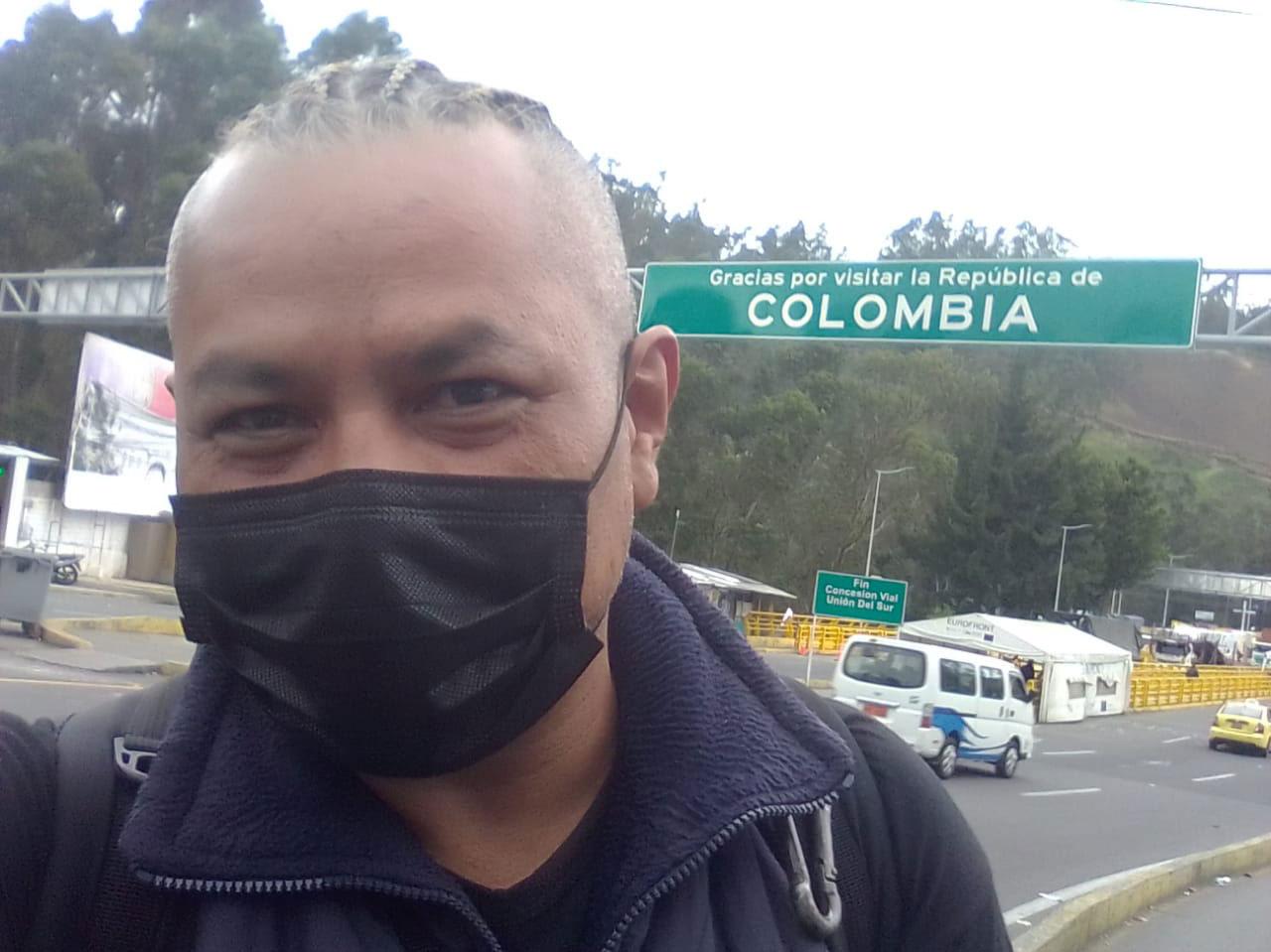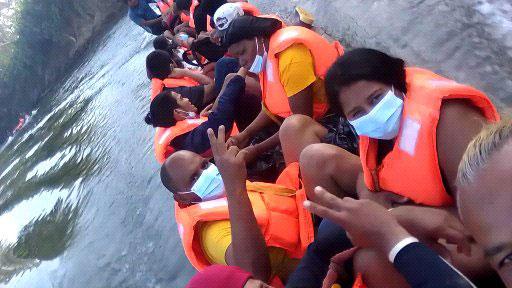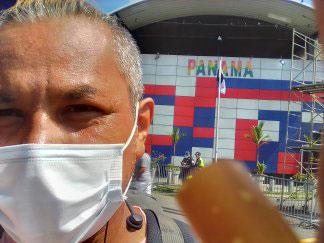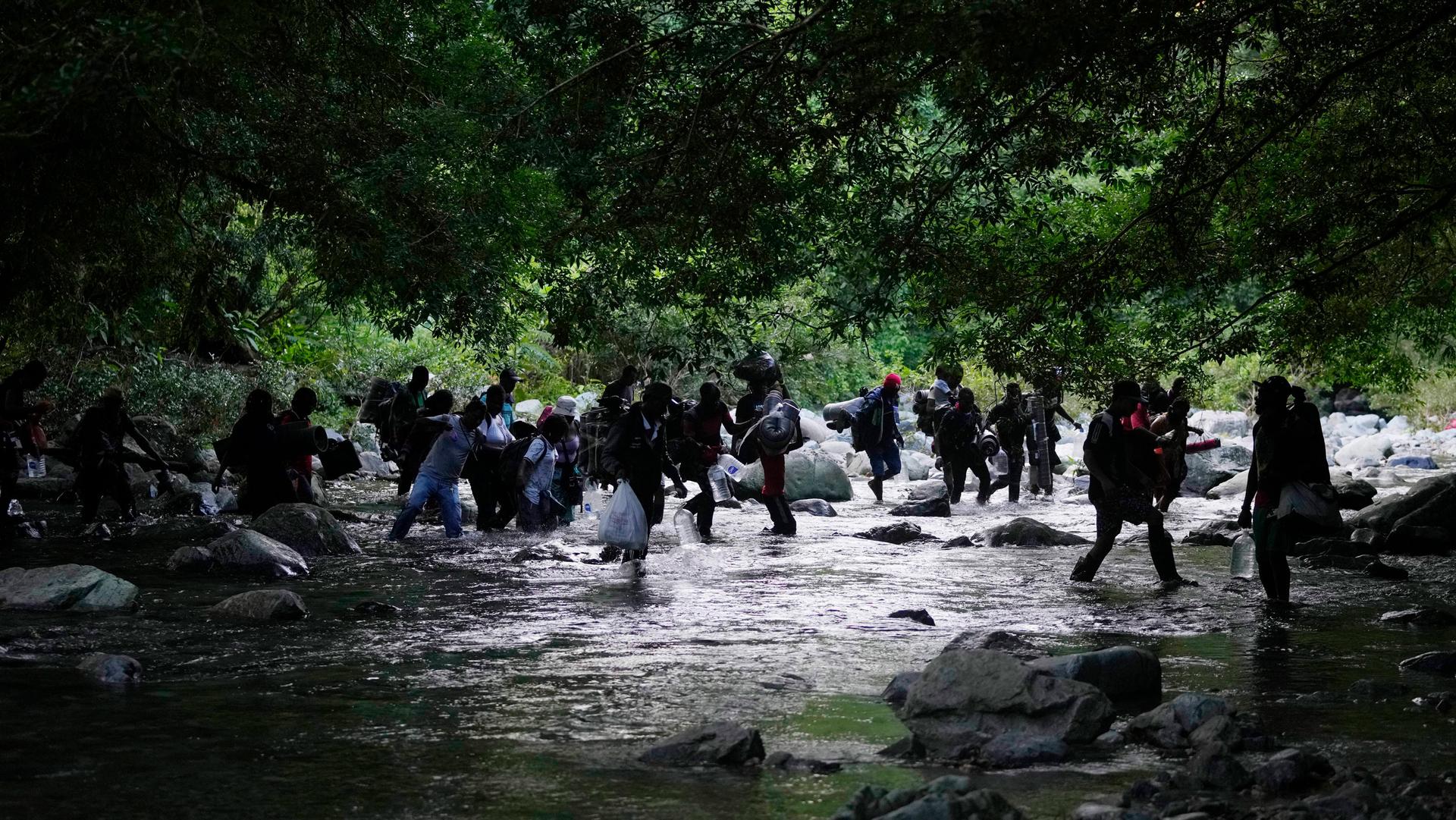Jose Loya arrived in the United States last week, after a two-month journey through 10 countries in South and Central America.
He said he can’t believe he is still alive.
As part of his trip, he had to go through the Darién Gap, a dense jungle located between Colombia and Panama, considered one of the world’s most dangerous routes for migrants. It’s also the only way to get to the United States from South America by land.
The number of people passing through the Darién Gap has actually gone down in the past six months. But a growing number of people from Venezuela have been making the risky crossing in recent weeks.
Related: ICC to open investigation over alleged crimes against humanity in Venezuela
“I survived a green hell. … You have to climb steep hills and trudge through swamps. We would walk 12 hours a day, we saw dead bodies, we came across a 2-year old child who was abandoned. I saw the worst side of human beings.”

“I survived a green hell,” he said in Spanish referring to the Darién Gap. “You have to climb steep hills and trudge through swamps. We would walk 12 hours a day, we saw dead bodies, we came across a 2-year old child who was abandoned. I saw the worst side of human beings,” he said.
Approximately 2,500 Venezuelans made the crossing in January and February, according to the Panamanian government. That’s nearly the entire number of Venezuelans who crossed in all of 2021, which was 2,819.
Loya, 42, started his journey in Peru, where he was living with his wife and 5-year-old daughter. “The pandemic hit hard in Peru,” he said. “I had a job, but it was increasingly difficult to make ends meet.” He spoke from West Virginia, where he is staying with a friend.
He said he and his family were facing discrimination because of their Venezuelan nationality. “[Peruvians] didn’t treat us well because of the country we are from — they don’t like our accent, they believe we want to steal their jobs,” he said. In January, Loya decided to migrate to the United States.
Most migrants are heading to the US, according to Jessica Bolter, associate policy analyst at the Migration Policy Institute.
She said many Venezualans were flying into Mexico. But in January, Mexican authorities started requiring visas for Venezuelan tourists.
“That was the most impactful decision,” she said, “because now that the pathway has been closed, some of those who are still most desperate to migrate are turning to the land route instead.”
The number of Venezuelans coming to the southern border of the United States dramatically decreased after the Mexican visa requirement, from 22,799 in January to 3,072 in February.
“It suggests that they were flying into Mexico as tourists and then traveling to northern Mexico. But now, it seems possible that [the Darién Gap] will be a new route for Venezuelans.”
“It suggests that they were flying into Mexico as tourists and then traveling to northern Mexico. But now, it seems possible that [the Darién Gap] will be a new route for Venezuelans,” Bolter said.
All countries in Central America, from Panama to Guatemala, require visas for Venezuelan tourists.
“It is driving people to dangerous, perilous routes,” said Sibylla Brodzinsky, a spokesperson for the United Nations High Commission for Refugees.
“A visa doesn’t eliminate their need to find safety and stability elsewhere. It just makes it more dangerous,” she said.
Related: Many Venezuelan migrants in Latin America struggle to get vaccinated
Brodzinsky explained that the Darién Gap is controlled by organized crime gangs.
“They pretty consistently rob refugees and migrants. We’ve seen a number of incidents of sexual assault against women, and at least 50 people were reported killed in in the crossing last year,” she said, adding that many more deaths went unreported.

Many die of natural causes or from accidents, according to Brodzinsky, like a stroke or a fall. Some faint from poisonous snake bites. These cases often get neglected. Water currents from the rivers that run through the jungle carry them away, unnoticed.
Brodzinsky said about half of the Venezuelans who crossed the Darién Gap in 2022 were previously settled in other countries in South America.
“Pandemic-related restrictions affected the informal economy the most. And refugees and migrants in South America generally work in the informal economy. With the pandemic, not only did their needs increase, but the needs of the families that they support back home.”
“Pandemic-related restrictions affected the informal economy the most. And refugees and migrants in South America generally work in the informal economy. With the pandemic, not only did their needs increase, but the needs of the families that they support back home.”
She mentioned that many immigrants in South America feel discriminated against, based on race, class or nationality.
“A huge factor is the growing expressions of xenophobia that people continue to experience in different countries,” she said.
Related: Venezuelan migrants in the US granted temporary protected status

For Loya, getting through the jungle was not the only difficult part of his journey.
He said he was kidnapped near the border between Guatemala and Honduras, and his family had to send $400 in ransom. He also said he had to bribe immigration officials consistently in almost all of the countries he passed through.
Once he arrived in northern Mexico, Loya said he swam across the Rio Grande and made it safely into Texas.
He is now applying for asylum in the US and trying to figure out how to bring his wife and 5-year old daughter.
